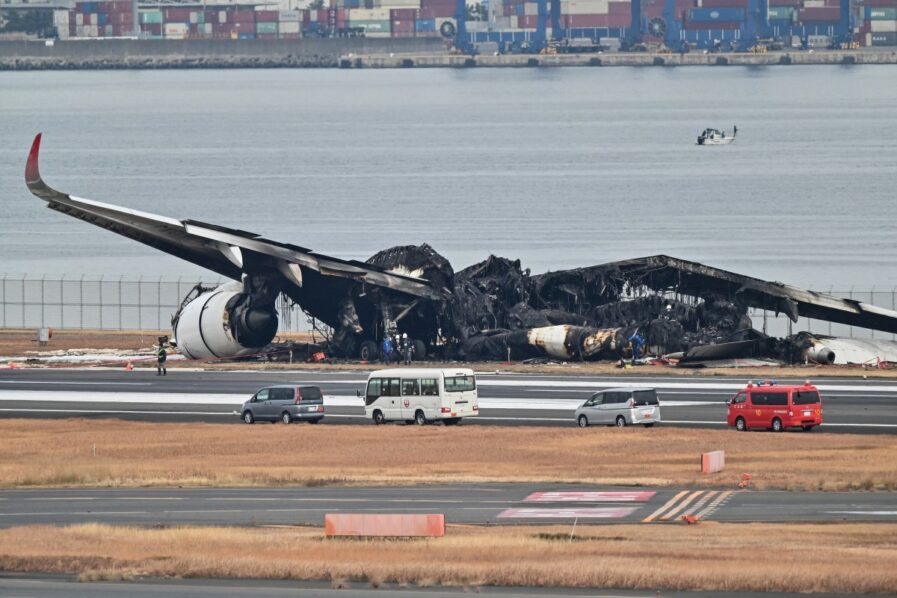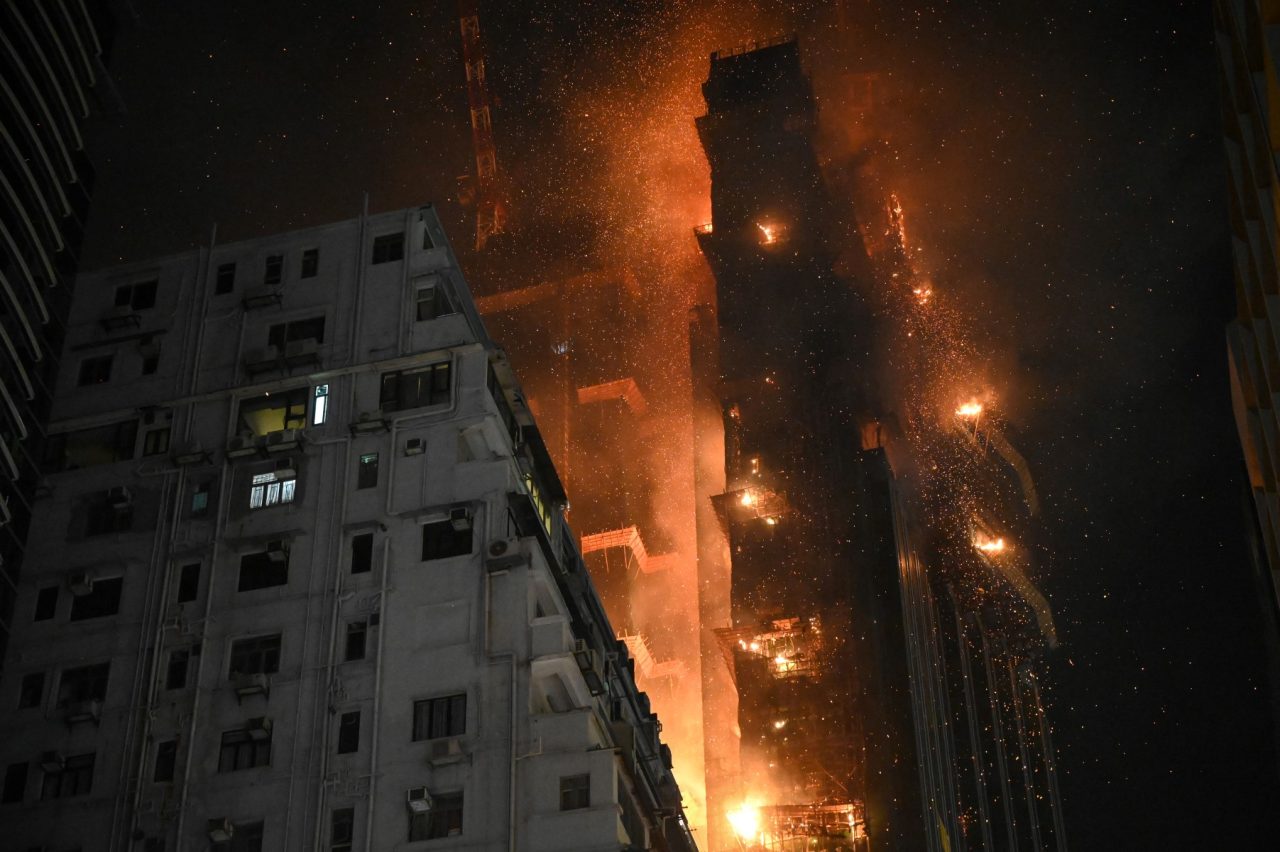
Pilots on a Japan Airlines plane that burst into flames just after all 379 passengers and crew escaped had no “visual contact” with the other aircraft in the collision, the airline said Thursday.
The three pilots were also unable to see the fire from the cockpit when it first broke out and were informed of it by cabin crew, a JAL spokesman told AFP.
The airliner hit a coast guard plane after landing at Tokyo’s Haneda Airport on Tuesday evening. All but one of the six people on the smaller aircraft were killed.
A ball of flame erupted from the airliner before it came to a halt and was consumed by a huge blaze, eventually leaving a charred husk on the tarmac.
But the pilots said they had no “visual contact” with the other plane, although one of them spotted “an object” right before impact, according to JAL.
“After the plane landed and around the time when the front wheels touched or were about to touch the ground — during those few seconds, they said they felt an impact,” the spokesman said.
The chief flight attendant, one of nine on board, reported to the cockpit that the plane was burning as the cabin crew needed permission to open the emergency exits, broadcaster NHK reported.
By this time, the cabin was filling with smoke and getting hotter, with babies crying and people begging for the doors to be opened, footage showed.
In one video clip, a young voice can be heard shouting: “Please let us out. Please. Please open it. Just open it. Oh, god.”
There were eight emergency exits but the evacuation began from two slides at the front of the plane because of the fire.
Crew members opened a third exit at the rear themselves because the broken intercom system meant they couldn’t request that the cockpit do so.
– ‘Textbook’ evacuation –
It took 18 minutes to evacuate the entire plane, with the pilot the last person to set foot on the tarmac at 6:05 pm.
Soon afterwards, the aircraft was an inferno and dozens of fire engines were trying to put out the blaze, a process that ended up taking eight hours.
“Honestly, I thought we wouldn’t survive,” another woman told broadcaster NHK.
In the end, only two passengers suffered physical injuries such as bruises or twisted limbs, JAL said.
“Passengers seemed to have followed instructions in a textbook manner,” Terence Fan, an airline industry expert from Singapore Management University told AFP.
– Confusion on runway –
Investigators from Japan, France, Britain and Canada were probing the crash on Thursday, with the charred remains of the two planes still littering one of Haneda’s four runways.
The flight and voice recorders from the coast guard plane have both been found, as has the flight recorder from the passenger jet — but not its voice recorder.
The transport ministry has released transcripts of the flight controllers’ communications, which show they approved the JAL flight’s landing.
But the coast guard plane was instructed to go to a spot near the runway, the transcripts showed.
Earlier, NHK had reported that the pilot, Genki Miyamoto, 39, said immediately after the accident that he had permission to take off.
JAL said it expected a damage cost of 15 billion yen ($105 million) for the destroyed plane, which should be covered by insurance, and is calculating damage to company earnings.
Japan has not experienced a serious commercial air crash for decades.
In 1985, a JAL jumbo jet flying from Tokyo to Osaka crashed, killing 520 passengers and crew, in one of the world’s deadliest crashes involving a single flight.
The world’s worst civil aviation disaster also happened on the ground when two Boeing 747s collided at Los Rodeos Airport on the Spanish island of Tenerife in 1977, killing 583 people.






